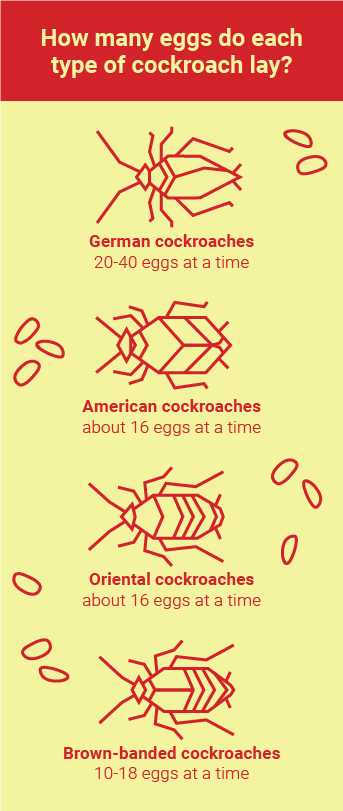Maturation
Once cockroaches finish hatching, they become known as nymphs, and they immediately begin growing. Cockroach nymphs undergo several developmental stages, known as instars, before reaching their adult stage, shedding their exoskeletons as they grow. Immature cockroaches are commonly white or cream-colored when they hatch, but over time, they become their mature black, brown, or gray coloring. A nymph cockroach will molt several times before becoming an adult.
- German cockroaches molt six or seven times before reaching maturity, over a period of about 103 days.
- American cockroaches molt ten to thirteen times before reaching maturity, over a period of about 600 days.
- Oriental cockroaches molt seven to ten times before reaching maturity, over a period of about 589 days.
- Brown-banded cockroaches molt six to eight times before reaching maturity, over a period of up to 276 days.




